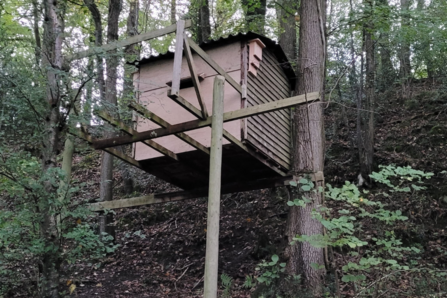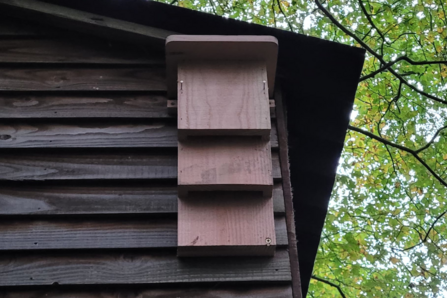
Finished bat hotel by Becca Bratt
Staff from Worcestershire Wildlife Trust are converting an old treehouse into a deluxe bat hotel. The treehouse was used by the previous owners of the woodland, which is now part of the local charity’s The Knapp and Papermill nature reserve near Alfrick.
Dominique Cragg, reserves officer for the Trust who is overseeing the project, commented “We know from regular surveys that 11 of the UK’s 17 breeding species of bat use the nature reserve so it’s great to get funding to provide more roosting spaces for them.
“There’s currently no evidence that bats are using the treehouse as it is so we’ll be creating different entrance/exit points, inserting an enclosed timber loft with perches and adding boxes inside and out. This will provide a range of roosting opportunities with varying temperatures, nooks and crannies.
“Different species of bat roost in different ways – some like tucking into tiny crevices whereas others hang upside down, as most people imagine all bats do. This means that, to be most effective for as many species as possible, we need to be creative with what we put into the space.”

